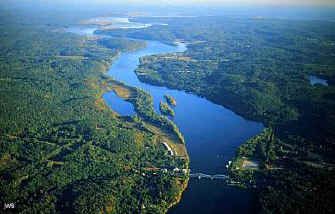Sedimentation Retention Basin for BMP to Watershed Environmental Pollution Control
Published on by Zaheer Iqbal in Academic
Modelling and monitoring ate two complementary procedures are being used for the assessment and evaluation of environmental pollution of the watershed for the last decades.
The modelling of diffuse sources of pollution is rather complicated comparing with point sources of pollution. In this regards various modelling procedure are interacted including mathematical techniques integrates with Geographical Information System (GIS) have been used for the evaluation of non-point sources pollution (NPSP) in the watershed.
Traditionally monitoring has been focused on point sources, while monitoring of NPSP has been more or less neglected and usually taken as the Deficit Pollutants Load (DPL) between total watershed load and point sources load. However precise and more prompt method is required to evaluate and control of NPSP during the planning and management of watershed.  A major concern in watershed planning and management is the sources of pollution including nutrients and sediments from land uses. In the more recent, Best Management Practice (BMP) is commonly used as cost effective mechanism to prevent water quality problems related to agriculture NPSP and surface runoff by reducing soil loss and sediments control providing numerous procedures including sediments retention basin, land forming, contour farming, filter striping and so on.
A major concern in watershed planning and management is the sources of pollution including nutrients and sediments from land uses. In the more recent, Best Management Practice (BMP) is commonly used as cost effective mechanism to prevent water quality problems related to agriculture NPSP and surface runoff by reducing soil loss and sediments control providing numerous procedures including sediments retention basin, land forming, contour farming, filter striping and so on.
Such studies required theoretical design of retention basin and modelling procedure for the transport of sediments and deposition during artificial impoundment. Theoretical design of retention basin is proposed followed by practical example in the real basin area. During artificial impounding, two factors including surface runoff and air circulation are found profound influence to determine the mechanism of flow, sediments and pollutant transport in the basin. The purpose of flow and sediment transport computation is to make proper use of the basin and to clean-up periodically in order to sustain the utilization of Best Management Practice (BMP) approach. Particularly, Sedimentation Retention Basin is used as one of the tools for Best Management Practice providing as defensive line for the protection of water bodies for watershed Environmental Pollution control.
Taxonomy
- Environment
- Watershed
- Pollution